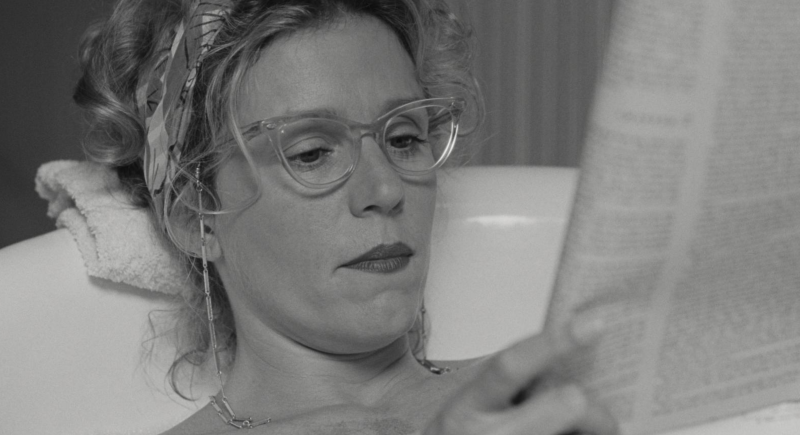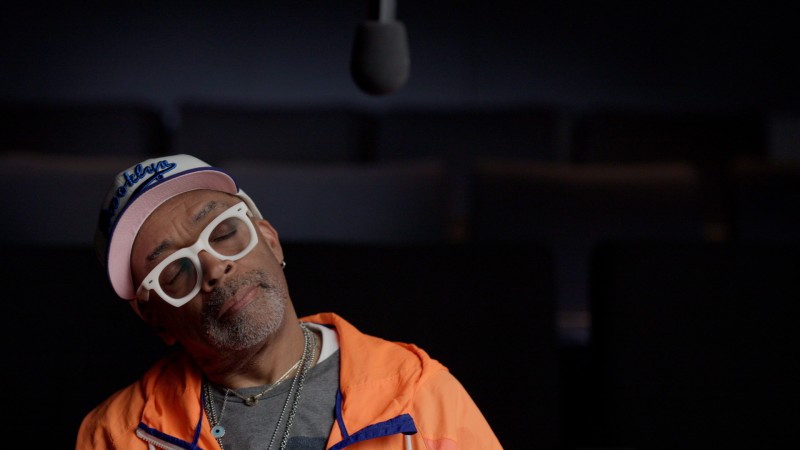What’s in a Name

Everyone knows the French named film noir. The familiar story has critics in France, as they caught up with Hollywood movies after World War II, discovering and christening this style of darkly shadowed, psychologically penetrating crime movies. But what Jean-Pierre Chartier wrote in 1946 was actually: “The Americans also make films ‘noirs.’” He meant that the French got there first—the phrase appears to have been coined by George Altman in a 1939 review of Marcel Carné’s Le jour se lève. A Hollywood-centric view has tended to obscure this, since American noir drew far more from German expressionism than from the French poetic realist cycle of the late 1930s, which combined gritty settings and downbeat stories with lyrically heightened atmosphere. But if you consider noir as a global phenomenon, then films like Julien Duvivier’s Pépé le moko (1937), Jean Renoir’s La bête humaine (1938), and Carné’s Port of Shadows (1938), with their fatalistic despair and moody romanticism, may be the first full harvest of this bitter crop.
The star of all these films, Jean Gabin, personified poetic realism with his blend of doomed glamour and proletarian skepticism. The young Gabin was both plainspoken everyman and alienated outsider, dominating the screen with blunt directness and unaffected sensitivity. Beneath his weary cool lay reserves of tenderness, but also of violent anger that regularly erupted in what André Bazin called his “enraged outcry against the universe.” Gabin may hold a record for on-screen suicides; no other star could face death and defeat so regularly yet leave such an overwhelming impression of strength.
Every country inflects noir with its own accent, adapts the form to its own climate. In American noir, people are undone by ambition and desire, convinced that they can have what they want if they grab hard enough and run fast enough. In French films, people often succumb instead to exhaustion, melancholy, nihilism: most poetic realist films contain some version of the line “living is hard,” or “life’s a bitch.” In the late thirties, this pessimistic passivity was associated—especially by those critical of the films—with France’s military weakness and premonitions of wartime defeat. Gabin, after starring in Remorques (1941)—Jean Grémillon’s bleak, exquisite portrait of romantic failure—fled occupied France rather than stay and work under the Nazis; following a brief and unsatisfying stint in Hollywood, he joined the Free French Forces and returned to take part in the liberation of Paris. But his career languished during the next decade; he made films that felt like tired re-treads of his earlier masterpieces (Au-delà des Grilles , Leur dernière nuit, La Marie du port), in which he seemed jaded and disengaged.
Then, in 1954, his becalmed career was revived by Touchez pas au grisbi, which established Gabin as the patriarch of French crime movies. As a gangster looking forward to retirement, happier munching foie gras with a pal than getting on with the tiresome business of shoot-outs with rival crooks, he is still an embodiment of fatigued and disenchanted middle age. But under the direction of Jacques Becker (a protégé of Renoir) he reveals a new kind of power, sleek and minimalist, like the quietly purring engine of a very expensive car. Never “movie-star” handsome, and aging badly, he still has le sex-appeal in spades, an irresistible mixture of toughness and gentleness, detachment and magnetically forceful attention. Becker was the one director who could match Gabin’s radical simplicity, his supreme gift for confronting us with the reality of his existence.
A big hit, Grisbi kicked off a run of stylish French gangster films that extended from Rififi (1955) and Bob le flambeur (1956) all the way up to the 1970s, with films like Jean-Pierre Melville’s Le Samouraï (1967) and Le cercle rouge (1970). These films seamlessly blend Hollywood influences (the long, wordless heist from The Asphalt Jungle [1950], the string of hard-edged exposés that followed the 1950-51 Kefauver hearings on organized crime) with French settings, argot, and elegant sangfroid. With its austere ritualism and pungent evocations of the underworld, the French gangster cycle is enduringly popular, yet some of its gems remain little known in this country.

Take Razzia sur la chnouf (1955), a riveting, clear-eyed portrait of the drug trade directed by Henri Decoin. In one of his best follow-ups to Grisbi, Gabin plays Henri le Nantais, an enigmatic homme dur who returns from America to become the enforcer for a sprawling heroin and opium ring. While smoothly running a nightclub as a front and effortlessly seducing the club’s 22-year-old bombshell cashier (Magali Noël), Henri shadows the ring’s smugglers, producers, dealers, retailers and hired killers, tracing a detailed portrait of the people—railroad workers, immigrants, junkies, homosexuals—caught up in the circulation of “chnouf,” a delightfully onomatopoeic slang term for powdered drugs.
There’s not a word of preaching in the movie, and none is needed. We see the degradation of the addicts, especially the sordid pathos of Léa (feverishly portrayed by Lila Kedrova), and the offhand brutality of the hit men (Lino Ventura, in his second film, plays one like a living slab of dry ice). Amid all the squalor and violence, “Henry from Nantes” is an ambiguous observer, the calm eye of a hurricane. We see flickers of compassion, but he’s coldly ruthless as he rides herd on the low-level dealers; his calm gives him tremendous authority, his stillness advertises immovable self-assurance. He gives nothing away, and the film’s final twist comes from the impossibility of reading him; he seems almost to exist beyond the moral categories beloved by Hollywood.
The gangster film, a genre that often overlaps with noir, has an innately classical, even conservative bent. It belongs to a world of rules, of honor and betrayal. While the seminal American gangster films of the early thirties followed young men of raw ambition as they clawed their way to the top—and to the spectacular death that always met them at the pinnacle—the French cycle of the fifties and sixties has an elegiac tone, full of older men ruefully surveying a changing world or the waste and futility of their careers in crime. But many of these films also have a wry undertone of amusement; their heroes have reached an age where they can look on fate’s insults with some equanimity. In Touchez pas au grisbi, there is no more outcry against the universe, just shrugging acceptance that things don’t work out, and a sensible focus on simple pleasures: a drink, a snack, a jukebox tune.
Whether it’s Gabin in Razzia attending to crêpes and paté while he instructs two thugs to punish a double-crossing employee but not kill him; or escaped kingpin Lino Ventura in Le deuxième souffle (1966) eating a lonely, silent dinner in a hideout on New Year’s Eve; or four middle-aged hoods solemnly imbibing bootleg hooch in the kitchen in Monsieur Gangster (1963), these tough guys take their food and drink seriously. In the delicious Deadlier Than the Male (1956, screening as part of the 2016 New York Film Festival), Gabin even plays the chef of a celebrated Les Halles restaurant, supervising the béchamel sauce as convincingly as he ever plugged an enemy or kissed a lover. The French infused noir not only with an accent and a climate, but with a rich and unmistakable taste.












